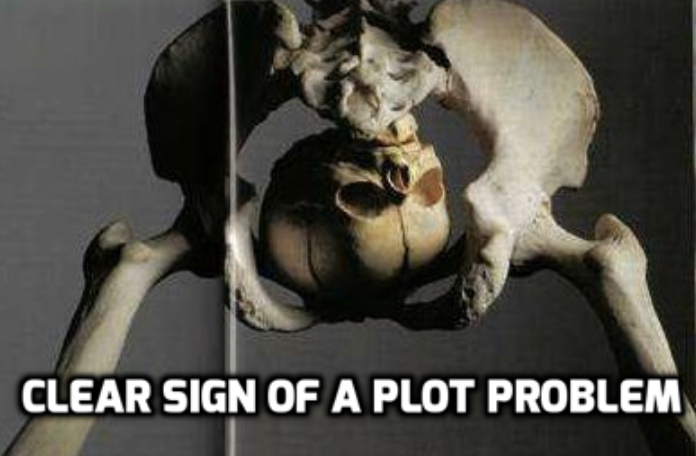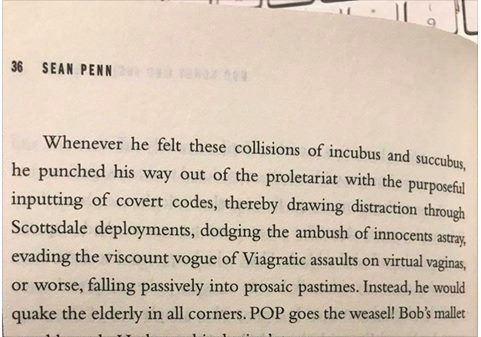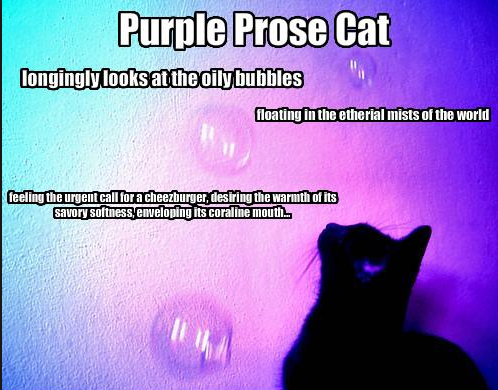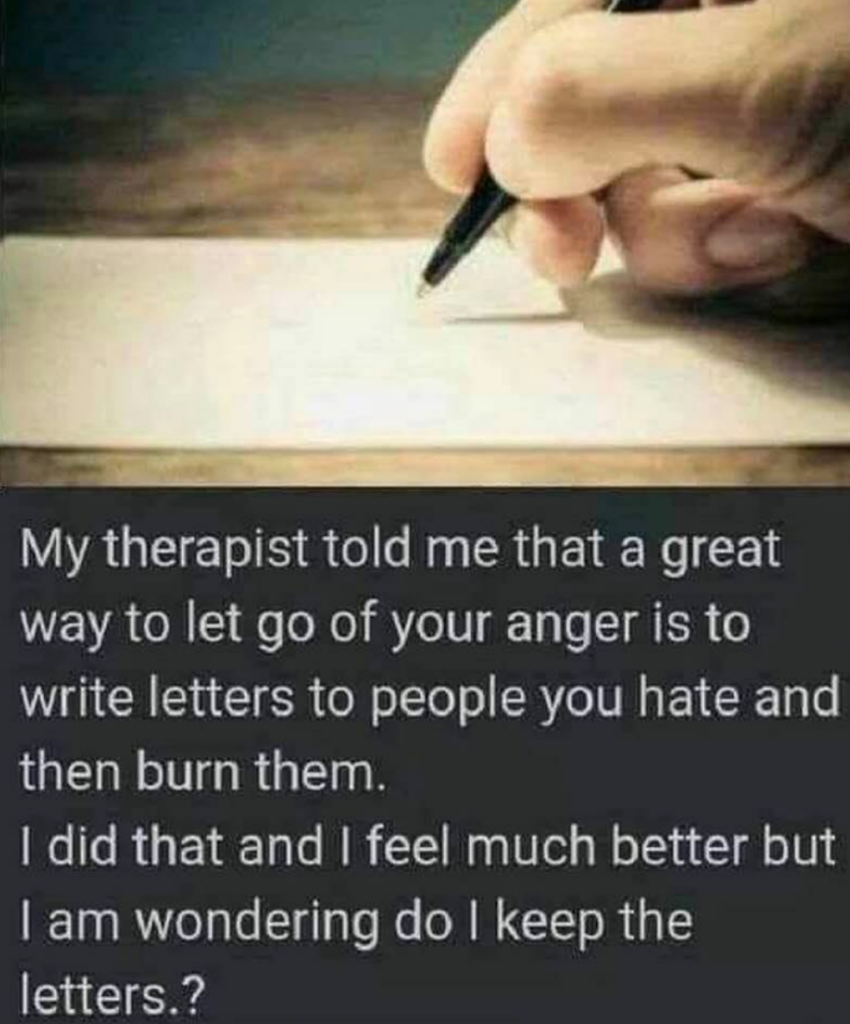

Editing makes up a HUGE part of the writing process. Oh, if all we writers had to do was sit down and slap glorious words on a page. If only it were so easy. For those new to this profession, here’s a truth bomb. This job is rewarding but it isn’t for the faint of heart. Writing is tough.
Professionals only make it seem easy.
I recently turned in my ghostwriting project. My client has given me permission to share in some of the glory, so to speak. The Trap: Sex, Social Media, and Surveillance Capitalism is now LIVE. Yes, my client worked in the adult industry for twenty years. It’s a book about the pitfalls of adult entertainment (for performers as well as the audience).
Aaand the final ended up at around 91,000 words (though, believe it or not, it’s a super quick read for being such a deep book).
Sure, writing about this topic was tough. Writing with a partner, the research, making sure I held true to the client’s voice, etc. was enough to make me want to go live in a blanket fort with my old Barbies and tubs of frosting. All in all, though, the writing was easy compared to the editing.
For those who are new, who maybe don’t know this next part, feel free to skim down to the tips 🙂 .
Editing is More Than Proofreading


Many new authors enter into professional publishing believing a few myths, which I shall now debunk. First of all, there are MANY types of editing/editors and the cost will vary. When I wrote my first 187,000 word ‘novel’ I:
- was an idiot who was too epically stupid to know I was epically stupid
- believed editors were only there to check for grammar issues, typos, punctuation, etc.
- thought that I didn’t need to sully my hands hunting down typos because editors would catch all my boo-boos for me
*clutches sides laughing*
The EFA (Editorial Freelancers Association) has a great breakdown of all the types of editing, range of cost, pace to expect, etc. HERE.
I’ve done all kinds of editing, but my strength is actually developmental editing (namely because I prefer it and my up close vision is 20/200).
If you refer to the chart, developmental editing can run from $46-$50 per hour with a pace of 4-6 pages per hour. What does this mean?
Let’s use an example.
Say we have a sci-fi novel that runs about 65,000 words (with a ‘page’ being 250 words). This works out to 260 pages. Divide this by 6 and that is roughly 44 hours. This means a professional copy edit can easily run between $2000-$2200…
…and that is only the first pass.
I’d also like to mention these numbers are averages from the EFA. I’ve known editors who charge $8,000 to $10,000 or more. But even if an editor offers a bargain basement deal—like say $500—if they have to go through multiple times? Back at a couple grand.
Count the Cost


A huge part of why I harp on learning about craft and how to write is that it will save you a TON of money when you hire an editor. If a book is clean and the author understands three-act structure, grammar, POV, character arc, and the basics of storytelling, I generally can up my pace…A LOT. If the content is solid, then odds are also good I’ll only need to make ONE pass.
Fairly safe to assume I am not alone in this.
*shout out to all the editors*
If I can get to the actual EDITING, then I can do 10-20 pages an hour. This lowers our total time down to 26-13 hours, cutting the bill at least in HALF. But, when I am bogged down with plot holes large enough to drive an Amazon truck through? POV issues? Typos, jarring jumps in time, and all the other basic stuff the author should have fixed?
It takes me MUCH LONGER.
The same, obviously, goes for all kinds of editors and proofreaders. I have LITERALLY had writers tell me they didn’t bother fixing their copy because, “That was the editor’s job.”
Okay, if that author sends pages (a mess) to an agent, that will likely be an automatic rejection. Publishers are in the business of making money. Spending the cost of a trip to Europe on developmental and line-editing is simply bad business.
Should that author want to self-publish then editing is a HUGE deal. When we self-publish, we are the publisher. This means we incur all the costs usually absorbed by others.
If we get lazy and have to spend a small fortune on editing alone, how many books do we need to sell to simply get out of the red?
Why Does Editing Matter?
Before we get to the tips, I am going to state (probably) the obvious. I shouldn’t have to, but whatever. I’ve read some wonderful writing samples, but there were so many errors they jarred me out of the story.
Typos and rookie blunders frustrate readers.
I recently borrowed a book on Audible and had to stop reading. While the story was cool, the writing was AWFUL. It was as if someone gifted the author a thesaurus and he decided to use every single descriptor. When the description is so heavy that I forget the point of the sentence? That’s a problem. And I LOVE description! So to irritate me is a real feat.
There were too many places where the author botched subject-verb agreement. He had run-on sentences everywhere. The story was just plain terrible writing. It’s great that this author could put a book out on Audible, but, as with all Kindle Unlimited books, the author is paid by the page. If weak writing makes readers give up, then that’s a waste of everyone’s time and effort.
All of this, for the record, was/is totally avoidable.
DIY Editing
The tips I am going to give y’all today are to help save time and money. YOU cannot edit your own work…not fully. When I negotiated my ghostwriting contract, I made this very clear to my client. I CANNOT SEE ALL MY OWN MISTAKES (and neither can y’all). Editing had to be a separate expense, a task delegated to a totally different person.
This said, I write super clean copy. Once the book was final, the editor could get right to proofreading and line-editing. Though Cait made suggestions regarding content throughout, ultimately that was because she was being nice. She didn’t have to make any suggestions.
Cait didn’t have to go rewrite the book because I didn’t grasp non-fiction essentials such as using an outline, thesis statements, building/developing an argument, how to cite works, and so on and so forth.
We are editors, not ghost writers. A ghost writer costs a lot more money.
As promised, I shall sally forth to the tips.
#1 DIY Adverb Removal
Despite what you might have been told, not ALL adverbs are evil. Redundant adverbs are evil. If someone shouts loudly? How else are they going to shout? Whispering quietly?
***Wow, glad the author explained how ‘whispering’ works.
Ah, but if a character whispers seductively? The adverb seductively gives us a quality to the whisper that isn’t inherent in the definition of the verb. Check your work for adverbs and kill the redundant ones.
Either we need to choose a stronger verb, or we’re treating the reader like an idiot.
If a character walks quickly to the train platform, then choose a verb that means ‘to walk quickly’ (stride, jog, hurry) and use that one instead. If a character yells loudly, ditch the loudly.
We understand how yelling ‘works.’
#2 Editing Out the Cray-Cray
First and foremost, readers want a STORY. Stories are more than loads of ‘pretty writing’ and using thousand-dollar words. Stories are about problems. A character thinks life is fine, then PROBLEM. The character then must struggle, grow, evolve, make choices to eventually SOLVE the problem (win, lose, draw).
Pretty description is optional. Big words are also optional. Alas, if we want to be a writer who uses description then we need to wield with economy.
Few things make me as giddy as a glorious line of description or a new vocabulary word. Many readers (and writers) are like crows.
We see the shinies and tuck them away because they’re THAT cool. One of my favorite books is The Devil in the White City.
When describing a miserable afternoon in late 19th century Chicago, the author had many options of how to do this. Instead of, “The day was humid and stifling,” Erik Larson wrote, “The air hung with the heavy stillness of a tapestry.“
There’s nothing, per se, wrong with the first description. But Larson’s line was far more visceral because he made use of multiple senses simultaneously.
But some writers take similes too far.
I’ve seen writers who’ve used so much ‘wordsmithery’ that I had no idea what the heck they were even trying to say. The goal of a novel is to hook readers into a dramatic narrative, not prove we own a thesaurus.
Exhibit A:


***Word on the street is the NSA is contemplating either revoking Sean Penn’s permission to own a thesaurus OR they want to weaponize his writing.
Metaphors and similes are fantastic literary devices, but need to be used with intention. Yes, in school, our teachers or professors didn’t ding us for using forty-two metaphors in five pages, but their job was to teach us how to properly use a metaphor or simile, NOT prepare us for commercial publication as professional novelists.


When we use too much of this verbal glitter, we can create what’s called ‘purple prose.’ Go through your pages and highlight metaphors and similes.
Pick THE BEST and CUT THE REST.
Any kind of description must serve the story and propel the dramatic action forward. If it doesn’t do this? CUT!
#3 Editing Out the Stage Direction
Again, the more time an editor devotes to a project, the higher the bill. Also, if an editor charges by the page, we could be paying for a lot of filler we could have removed ourselves.
Alfred Hitchcock said, “Drama is life with the dull bits cut out.” Readers don’t need every single step of a day. We live it, why would we read it?
Yet, I see a lot of samples like this:
Fifi opened her eyes at dawn. She pulled back her covers and placed her feet on the floor. Padding across the room, she reached for a robe hanging on her door. Her stomach growled, so she went downstairs and opened the fridge for the carton of orange juice, then grabbed a glass from the cabinet. Turning around, she searched for a granola bar….
OH, GET ON WITH IT!
An editor is going to cut all of this because NOTHING IS HAPPENING. Also, readers pretty much know how the whole ‘getting juice’ phenomenon works. They don’t need a blow-by-blow.
Fifi reached out her hand to open the door.
NO KIDDING.
Unless Fifi has telekinetic powers, do readers need the direction?
Filler pads the word count, but it also pads the editing bill. The verbs turn, look, grab, pull are possible red flags you’re doing too much stage direction. My advice is to do a Word Find and search for these verbs and their variations (I.e. look, looked, looking). See if the action is necessary or if you’re holding the reader’s brain.
If you’re holding the reader’s brain? Return it, please.
#4 Beware of Painful & Alien Movement of Body Parts
Her eyes flew to the other end of the restaurant.
He dropped his head.
Um…ouch.
Make sure your character keeps all body parts attached. Her gaze can follow a person and so can her stare, but if her eyes follow? The carpet gets them fuzzy with dust bunnies and then they don’t slide back in her sockets as easily.


#5 Ease Up on the Physiology
Fifi’s head pounded. She ran for the door, her heart hammering and wild pulse beating relentlessly in her head. Her breath came in choking sobs. All she could do was gasp. Panic made her throat clench and stomach heave. Mind numb, she reached for the door, fingers trembling.
GET TO IT ALREADY!
After a page of this? I need a nap. After two pages? I need a drink. We can only take so much heart pounding, thrumming, hammering before we just get worn out. That and I read a lot of samples where the character has her heart pounding so much, I’m waiting for her to slip into cardiac arrest at any moment.
Physiological reactions can become echoes. If every page the character has her stomach churning, roiling and rolling, our reader will need an antacid before finishing the chapter (provided she finishes at all).
I strongly recommend a copy of Angela Ackerman and Becca Puglisi’s Emotion Thesaurus to help you vary physiology. Also, if someone’s heart is pounding, that’s okay. We just don’t need to be told this over and over and…over.
We (readers) assume the character’s heart is still pounding until she’s out of danger.
No need to remind us.
Really.
#6 Editing Out Odd Sentence Construction


In an effort to break up and vary sentence structure, many emerging writers will craft sentences like this:
With the months of stress pressing down on her head, Jessie started ironing the restaurant tablecloths with a fury.
First, this is backing into the action. Though technically correct (enough), it’s easy to lose a reader if we have too many sentences like this. Active sentences are the easiest on the brain and keep the reader immersed in the fictive dream.
Then there are the picky issues with the example above. For instance, when we use the word ‘down,’ then ‘on’ is redundant.
Also, Jessie is either ironing or not ironing. ‘Started’ is overused and makes sloppy writing (this actually goes back to the whole stage direction thing).
Jessie ironed the restaurant tablecloths with a fury, months of stress pressing on her shoulders.
Another way writers will vary the beginning of sentences is they’ll default to what’s known as passive voice.
Passive:
The door was kicked in by the EMTs.
Active:
EMTs kicked in the door.
If you go through your pages and see WAS clusters? That’s a HUGE hint that passive voice has infected your story.
Many writers end up with strange sentence construction because they realize every sentence is starting with the character’s name or the appropriate pronoun. They’re trying to ameliorate the repetition of Jessie, Jessie, Jessie, she, she, she. The problem, then, is not sentence construction, rather the writer needs to open the lens of the storytelling.
Remember our character doesn’t need to be the subject of every sentence. We’re telling a story. This means we can work with setting, other characters, etc.
#7 Get Rid of ‘Clever’ Tags
Ideally, if we do a good job with our characters, the reader should know who’s talking without tags because speech patterns differ. If all our characters ‘speak’ the same way, that is an issue we need to remedy.
We can’t always do this, which means we can use a tag. Tags are fine, but keep it simple. This isn’t the place to get clever.
‘You are such a jerk,’ she laughed.
A character can’t ‘laugh’ something. They can’t ‘spit,’ ‘snarl,’ or ‘grouse’ words either. They can SAY and ever so often they can ASK. Said used properly becomes white noise.
NOTE: Use said as a tag…just don’t get crazy. If you beat it up, it also gets distracting and annoying.
But again, used properly readers don’t generally see it. It keeps them in the story and cooking along. If we want to add things like laughing, griping, complaining, then fine. It just generally shouldn’t be the tag.
“You are such a jerk.” She laughed and flicked brownie batter onto Fabio’s white shirt.
Notice how sentences like the one above also keep us from beating said to death?
I swear the funniest instance of bizarre tags was a new writer who just would NOT listen to me and she insisted on using all these crazy tags. So instead of exclaimed when her character yelled something, she tagged with…he ejaculated.
*Editor Kristen falls over laughing*


Okay y’all ALL sniggered at that one. Feel free to be creative just not in the tags, ya dig? 😉
Tip #8 Open Your EYES
One thing I will promise y’all ahead of time is there really is only one way to find all the typos. Publish your book. Seriously. Before I became a professional author, I was super judgy about typos. Now? If I get through a book and there are only a handful of oopses? That is an AWESOME book. Especially if the book is longer…like 91,000 words.
Maybe I am wrong and I wish all of you a perfect book, but I am still going to offer some hacks I’ve learned over the years.
One of the reasons it is almost impossible to edit our own work is we have SEEN our own writing SO many times, our brains insert what should be there instead of seeing what is actually on the page. We become blind to our own errors.
Here are some tricks to help y’all SEE.
One, is to change the font. Sometimes shifting from Times New Roman to, say, Courier, or Callibri can help. There is also a downloadable font for people who are dyslexic that is AWESOME.
Another trick is to change the color of the background. When I switch to white letters on a black background, a lot of the repeated words, floating commas, and homeless punctuation practically leaps off the page.
There is also a function in Word that will read your manuscript aloud to you. It certainly isn’t going to sound like Simon Vance, but hearing the words will help you pick up echoes, passive voice, weird sentence construction and the like.
I LOVE Hearing from Y’all! What are Your Thoughts?
I know there was a lot in today’s post, but I wanted to offer y’all a comprehensive reference. There are plenty of books I can recommend in a later post, but this hit a lot of the high points…and I added in stuff I have learned from years of trial and error.
What are your questions? Suggestions for topics? Thoughts, problems, ways you’ve figured out how to self-edit?
***FYI: Back in May, I offered my reward for commenting. The next day, I found out my mom had to go in for emergency cancer surgery. She is fine, but I had to stay with her almost two weeks and everything went sideways being away.
SO…May’s winner is Katherine Smits. CONGRATULATIONS! E-mail me at kristen at wana intl dot com. I need your pages in Word, double-spaced, one-inch margins, and 250 words is considered a ‘page.’ Feel free to go a little over if you need to finish a thought or paragraph, just don’t get crazy 😀 . Please put CONTEST WINNER in all caps in the header of the email so I can FIND you. Being gone so long, my email has gone a tad feral.
I love hearing from you and am not above bribery!
What do you WIN? For the month of JULY, for everyone who leaves a comment, I will put your name in a hat. If you comment and link back to my blog on your blog, you get your name in the hat twice. What do you win? The unvarnished truth from yours truly. I will pick a winner once a month and it will be a critique of the first 20 pages of your novel, or your query letter, or your synopsis (5 pages or less).
